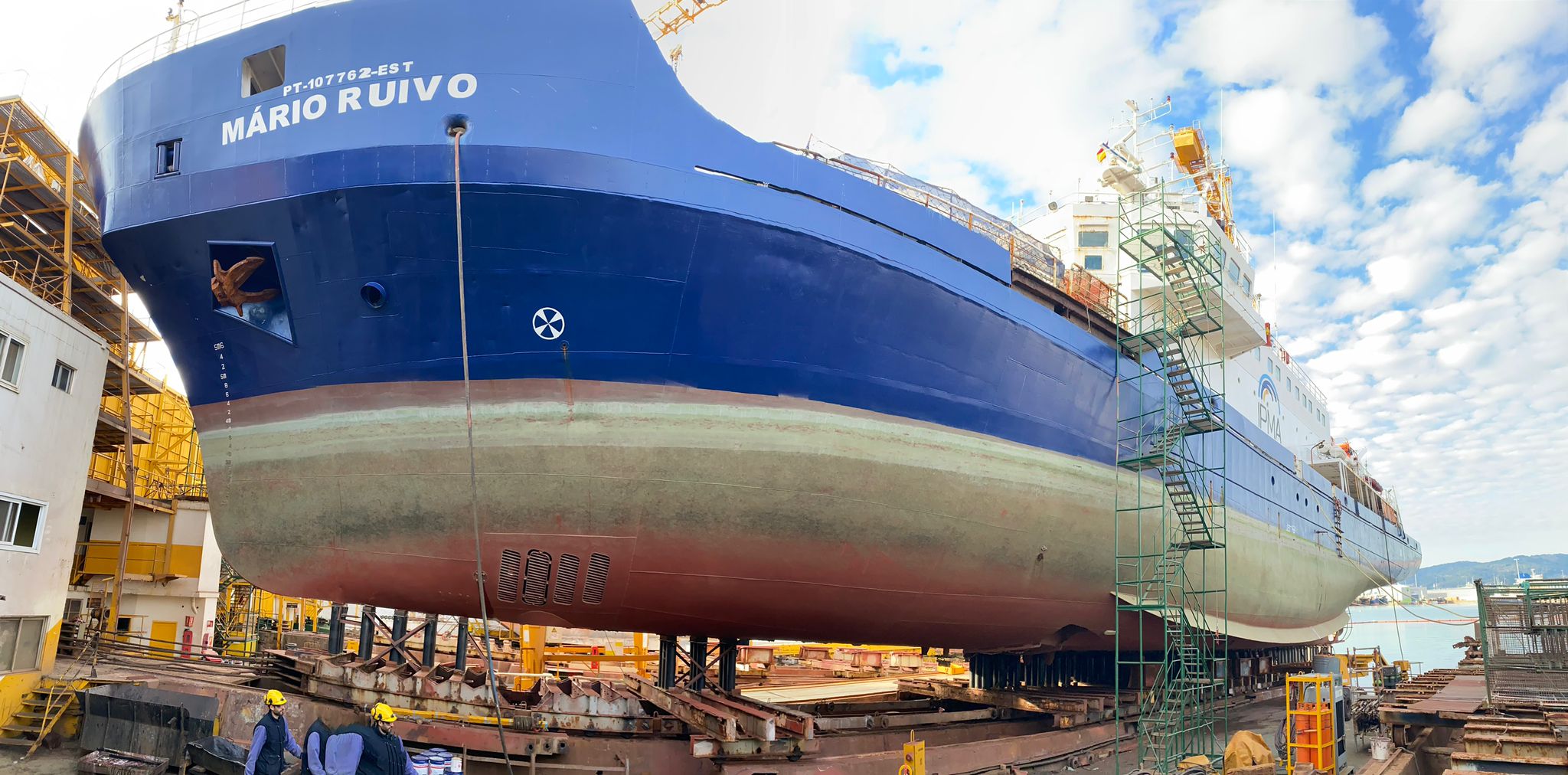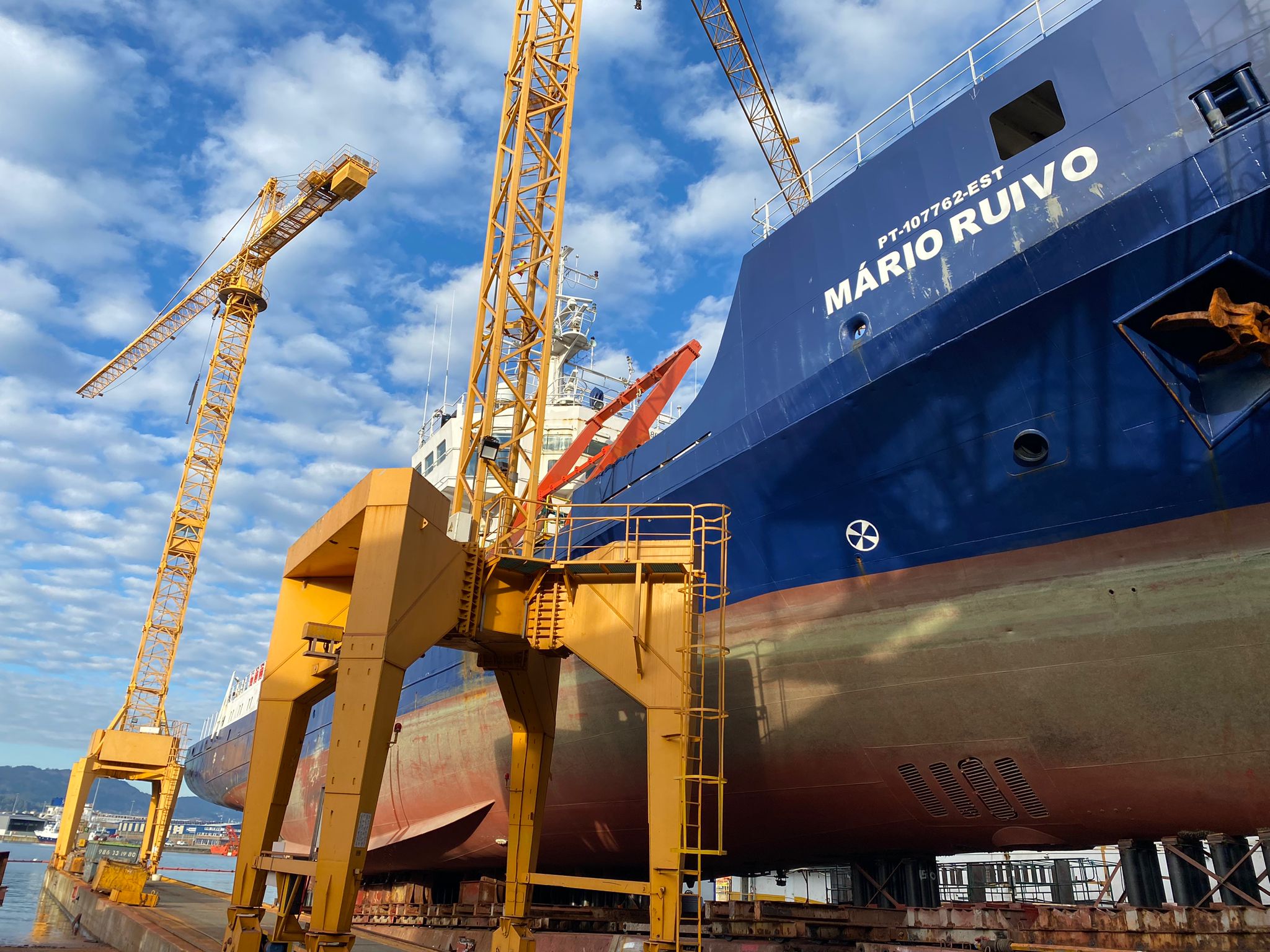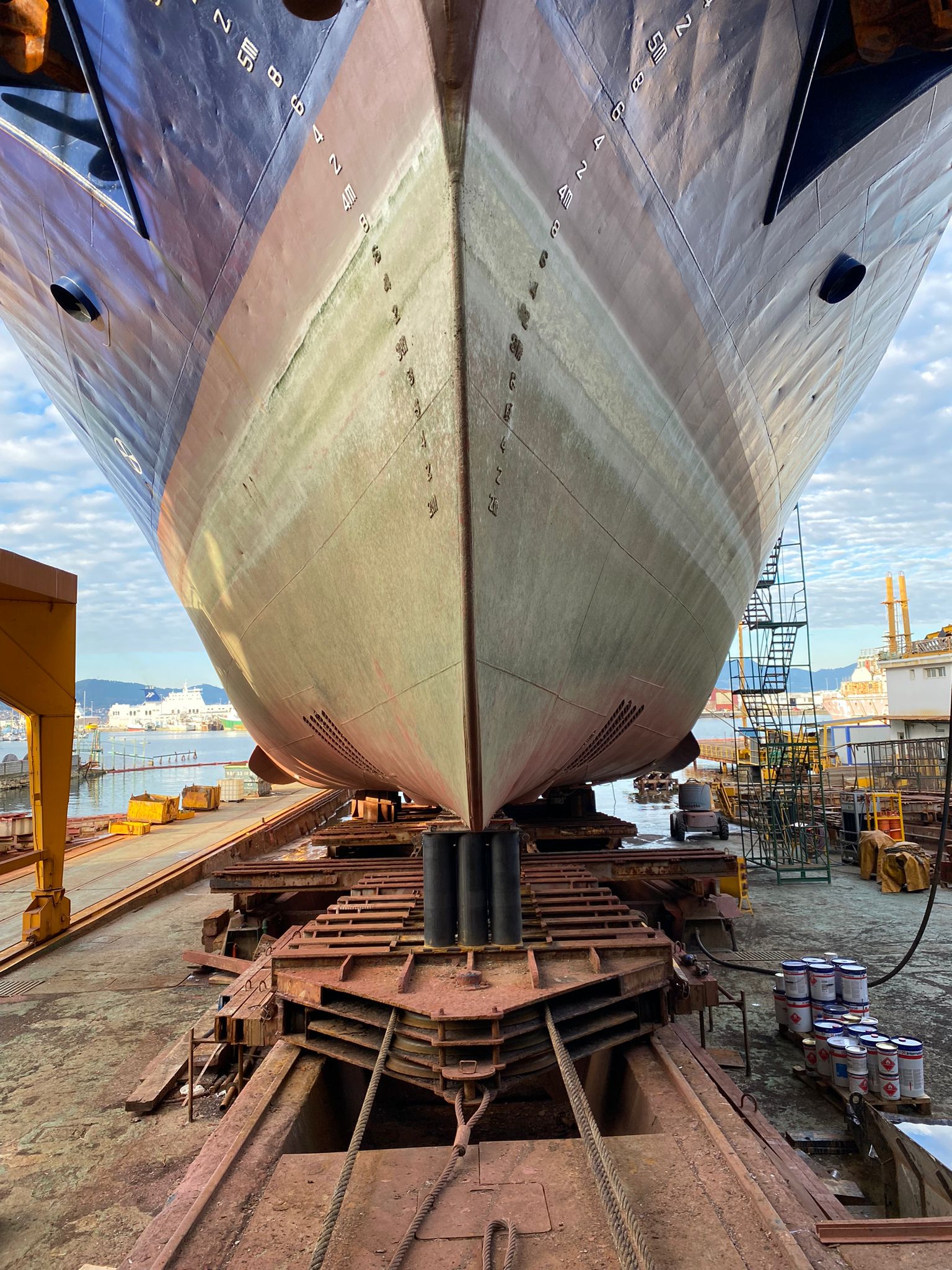The research vessel (NI) Mário Ruivo is at the Cardama S.A. shipyard in Vigo, where new scientific equipment will be installed to enable multidisciplinary oceanographic campaigns, including habitat mapping, environmental, ecological and fisheries research, and mapping of the seabed s. The new investment gives to the Portuguese research and educational community the access to an oceanic vessel with an even larger scope of research activities, promoting the knowledge of marine ecosystems and ensuring the sustainability of the economic activities of the “Blue Growth” programme. The new technical-scientific equipment include:
– omnidirectional long-range sonar used for measuring schools of fish and macrozooplankton, for counting and behavioural studies of schools of fish, individual dives of marine mammals and seabirds;
– echosounder (Split Beam Echo Sounder) used in fishing, especially to estimate the abundance of fish and zooplankton through multiple frequency measurements, with the ship underway or completely stationary.
– acoustic doppler current profiler (ADCP) to map the distribution of water currents and suspended materials in the water column (continuous oceanographic measurements);
– deep-water multibeam bathymetric sounder for mapping the bathymetry of the seabed up to a depth of 8 000 metres;
– multibeam bathymetric sounder for intermediate waters to map the bathymetry of the seabed up to a depth of 3 000 metres;
– parametric sub-bottom profiler for mapping the seabed, used to obtain images of underwater structures or objects on the seabed, capable of operating at depths of up to 11 000 metres.
In addition to the installation of the new scientific instruments, the ship will receive new workstations and monitors for data visualisation in the data processing room and bridge, and the main deck cabins will be refurbished, creating the necessary conditions to welcome more researchers and technicians on board.
The upgrade and installation of new oceanographic equipment is taking place between January and February 2024.



